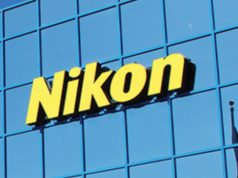Nacho Abia, president of Olympus Imaging America, has been with Olympus for 12 years. Originally from Spain, he was asked to take over the imaging business in Europe at their Hamburg office seven years ago. In 2011, he joined Olympus America as president of its Imaging division. I recently sat with Nacho Abia to talk about the Olympus imaging business, the company’s commitment to mirrorless technology and what is driving its success.
JG: Olympus was always a very strong player on the SLR side, and in the professional business, as well as in the point-and-shoot category with your Stylus line. Lately, it seems the company has changed its focus. What’s the evolution of the change?
NA: The compact market has declined in the last few years. At the same time, we’ve seen growth in DSLRs and a significant opportunity in compact system cameras. We believe we’re still in the very beginning of the mirrorless camera explosion. Olympus has been at the forefront of mirrorless technology, and it’s been a very nice boost for us from a market that was beginning to stagnate.
With the introduction of the Olympus PEN mirrorless camera, you were certainly on the cutting edge of this technology. Talk about the development of the mirrorless camera.
Olympus has always been a leading camera manufacturer, but when the consumer electronics manufacturers entered this space it became more competitive and challenging for all the “purebred” camera manufacturers. We had been used to competing with companies like us—similar size, similar power—and suddenly we had to compete with companies much larger and with greater resources and a lot of brand power. This made the game very interesting. We had to learn how to compete in an entirely different environment.
Olympus has always been an innovative company, and when the 4/3 system appeared, it was bold for us to adopt that technology when the other two large companies decided not to. We launched 4/3 because we wanted consumers to enjoy a true digital experience. Over the last two to three years, we’ve seen the compact business declining with smartphones taking a portion of the low-end market. This is a fact we cannot avoid.
Most people want the level of quality from large cameras but in a smaller size. In the point-and-shoot market there is an increasing demand in the high DI compact category—those products that offer the quality that smartphones cannot. We know from a pure physics standpoint that it’s very difficult to put the same caliber of glass in a smartphone. That’s a natural limitation, and it’s good news for a camera company.
A camera is an optical device, and it’s physically impossible, no matter the smartphone’s megapixels, to offer similar quality. So that’s where we focus. A smartphone is a great device to capture images at a certain moment, but if you want your memories to be recorded, there is really no choice. My son is three months old; I would never trust a smartphone to take pictures of him.
Is mirrorless taking more from the lower end or the higher end?
Mirrorless is taking from both. There are a number of compact camera users who want better quality, and they are moving from high-end compacts to mirrorless. That’s around 70% of the business. The other 30% is coming from the bulky DSLRs, because those customers want something they can carry with them when they’re traveling. They’re also realizing they can get the same quality more comfortably. In addition, we’re seeing DSLR users buying mirrorless cameras as a second camera.
Do you see yourself getting out of the low-end at some point?
No, I don’t think so. It’s just a tougher market in which to compete. However, it’s a large-volume market, and the products are commodities, so margins are tough to find. If we look at where we’re going to invest in R&D, the clear focus is on mirrorless high-end cameras, and at some point we’ll move that technology into lower priced cameras that are suitable for customers who are not willing or able to purchase the high-end cameras.
Obviously, sharing has become an important part of photography; do you see wireless as an important inroad for Olympus?
Yes, connectivity is very important. The advantage of the smartphones is first, portability—you always carry it with you—and second, connectivity. I believe that connectivity, in one way or another, is going to continue to be important. At this point, everything is possible, but we’re going to see efforts from manufacturers to promote Wi-Fi and make it very easy for consumers to upload and share. It’s not about the technology; it’s about making the sharing process easy for the consumer.
So, where is Olympus on the high-end? You seem to be out of the pro, high-end business. Are you easing away from that business?
That is a difficult question, and there are open debates on where we should concentrate. We have a number of 4/3 camera users who have glass from us, and we will not abandon them. So, the E-5 is there and it’s going to continue to be there. The question is when an E-5 successor will come. Today, the priority within the company is more toward mirrorless than traditional DSLRs, but it doesn’t mean we’re not going to be in the DSLR business.
The OM-D E-M5 is a tremendous success. We announced the camera in April and are still fulfilling back orders. This proves that when you are able to put the right technology in a camera that consumers are waiting for, it can be a huge success. I think in mirrorless we have to really explore this area more than the price. I don’t agree that mirrorless has to be somewhere between DSLRs and compacts. Mirrorless is something different but at the same level as DSLRs. The E-M5 proves even pros can be satisfied with a mirrorless camera; that’s why we’re extremely happy with the success of the E-M5 model. We continue to sell the E-5 DSLR and there is no plan to discontinue it, but I cannot tell you whether or when a successor might be coming.
Why is the adoption of mirrorless taking so long in the U.S?
It’s a combination of many things. The U.S. market is usually not an early adopter of camera technology; usually it starts in Asia, then Europe, then America. So, we do believe that not far from today, half of the market will be mirrorless. That is the reason why much of our efforts are focused on offering competitive products on the mirrorless side.
Another market factor is that size matters here, but our emphasis on size runs counter to that of the rest of the world. In Japan and Europe, the smaller, the better. In America, the bigger, the better. Most Americans believe the bigger the camera is, the better the quality must be, and this perception takes time to change. That’s probably the main reason why it’s taking more time. Also, part of our industry does not have an overwhelming interest in the development of mirrorless, because they are enjoying success in the DSLR market.
There are also a lot of marketing games going on, which I understand, and which I’m very respectful of. However, I think now we are at the point that everybody realizes that mirrorless is going to be a major factor going forward, and everyone is going to start to push the development of this technology. I anticipate over the next two or three years that there will be strong growth in the category.
Do you think that Olympus being first out with mirrorless will be an advantage going forward?
In general, consumers have a pretty short memory, and I think that being the pioneer in a category doesn’t mean too much from a consumer perspective. Being first means we have more experience with the development of technology within the category, meaning we can bring to market more well-thought-out products. However, in the U.S., marketing is important, and what we’ll see a year from now might be very different from what we see today. The good thing is that it’s very open, and it’s clear we don’t know who’s going to lead this market. So it makes all of us sharpen our pencils, from an investment point of view, and also in our need to introduce excellent products into the market.
How important is the equity and photo heritage that Olympus has in your efforts going forward?
The fact that our focus is photography is a clear advantage for us. The CE companies manufacture a large number of product lines. Photography may be important to them as the market grows, but now that some of the segments are declining, they may lose focus. However, this is our life; this is what we do, this is what we know how to do, and it’s important for us to survive in this market. All of our efforts are focused on perfecting camera technology. That’s our commitment. The disadvantage in terms of the level of competition at different points is becoming an advantage for Olympus and other traditional photo manufacturers.
Many of our readers are independent photo retailers. What’s your distribution strategy now and going forward?
Our distribution strategy is based on a basic principle: we want to sell our products in those places where consumers are going to buy, and we think it’s important for our retailers to add value to the process. When a retailer is not adding value to the consumer, they are losing ground or going away. In this sense, the spectrum we want to work with is quite large—both retailers and e-tailers. We have broad distribution now; we aren’t missing any relevant channels. Generally, any consumer can find our products easily.
Part of the advantage of the independent channel is their expertise in the camera industry—and you are primarily a camera company devoted to this industry.
There is an emotional link from the photo retailers to work with the “traditional” manufacturers, and only in the past five or six years have we seen other electronics manufacturers get into this business. In many cases, the photo specialty channel has been dealing with our reps for more than 25 years.
For us, the photo specialty channel has been there a long time, and we’ve been through successes and challenges together, and very long relationships. There is a critical place in the market for this channel. We value stores that are offering advice and good service and also have great relationships with the customer.
What do you want the Olympus brand to stand for—both for the consumer and the trade?
We want to be seen as a company that provides the better photographic experience and offers a range of products that match the needs of our consumers. We want to be seen as an approachable, human company, and we’re working through the “capture your stories” model to capture, share and keep their memories. We are committed to investing more marketing dollars in the U.S. to support our sales efforts, which we will continue. To that end, we will be increasing our advertising and become more active in social media and PR, to tell consumers how strong our products are and to encourage people to share their experiences through social media.
What keeps you up at night?
Honestly, I sleep quite well. I believe in the consistency of the things we do. Every time I manage a new business, I know we have to draw a good strategy, set a direction and align people to work in that direction. There is no secret recipe. I believe we will be successful if the efforts of our people are aligned in the same direction. I feel comfortable that we’re doing a good job. We’re seeing all the efforts of the last few months paying off, and there are very positive signals in the market. When you do your best at addressing a problem that has a solution, it’s not a problem anymore. With this policy, I sleep very well at night. olympusamerica.com





